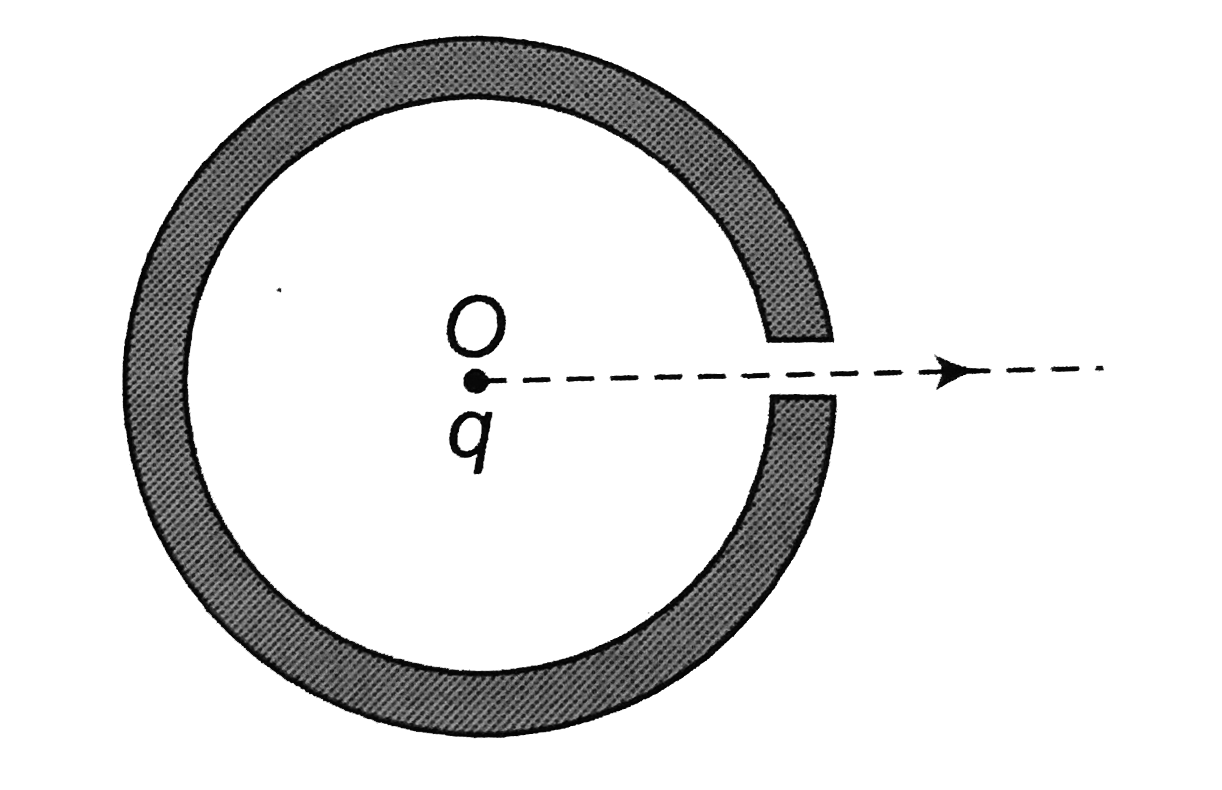A point charge q is located at the centre of the spherical layers of uniform isotropic dielectric with relative permittivity K.The inside radius of the layer is equal to a and the outside radius is equal to b.The electrostatic energy inside the dielectric layer is
Step by step video & image solution for A point charge q is located at the centre of the spherical layers of uniform isotropic dielectric with relative permittivity K.The inside radius of the layer is equal to a and the outside radius is equal to b.The electrostatic energy inside the dielectric layer is by Physics experts to help you in doubts & scoring excellent marks in Class 12 exams.
Updated on:21/07/2023Topper's Solved these Questions
- ELECTROSTATICSBOOK - PHYSICS GALAXY - ASHISH ARORACHAPTER - ELECTROSTATICSEXERCISE - Partice Exercise 1.2
1 Videos
- ELECTROSTATICSBOOK - PHYSICS GALAXY - ASHISH ARORACHAPTER - ELECTROSTATICSEXERCISE - Partice Exercise 1.3
1 Videos
- ELECTROSTATICSBOOK - PHYSICS GALAXY - ASHISH ARORACHAPTER - ELECTROSTATICSEXERCISE - Partice Exercise 1.1
1 Videos
- ELECTROMAGNETIC INDUCTION AND ALTERNATING CURRENTBOOK - PHYSICS GALAXY - ASHISH ARORACHAPTER - ELECTROMAGNETIC INDUCTION AND ALTERNATING CURRENTEXERCISE - Advance MCQs
33 Videos
- GEOMETRICAL OPTICSBOOK - PHYSICS GALAXY - ASHISH ARORACHAPTER - GEOMETRICAL OPTICSEXERCISE - Unsolved Numerical Problems
107 Videos
Similar Questions
A point charge q=3.0m,uC is located at the centre of a spherical layer of uniform isotropic dielectric with permittivity ε=3.0. The inside radius of the layer is equal to a=250mm, the outside radius is b=500mm. Find the electrostatic energy inside the dielectric layer.
View SolutionA point charge q is located at the centre of a ball made of uniform istopic dielectric with permittivity epsilon. Find the polarizaion P as a function of the radius vector r relative to the centre of the system, as well as the chagre q' inside a sphere whose radius is less than radius of the ball.
View Solution
Knowledge Check
A point charge q is located at the centre of the spherical layers of uniform isotropic dielectric with relative permitivity K.The inside radius of the layer is equal to a and the outside radius is equal to b.The electrostatic energy inside the dielectirc layer is
A14πε0q22K2(1a−1b)B14πε0q2K2(1a−1b)C14πε0q22K2(1b+1a)D14πε0q2K2(2b−1a)When electromagnetic waves enter the ionised layer of ionosphere, then the relative permittivity i.e. dielectric constant of the ionised layer
Adoes not changeBappears to increaseCappears to decreaseDsometimes appears to increase and sometimes to decrease
A point charge q is located at the centre O of a spherical uncharged coducting layer provided with small orifice. The inside and outside radii of the layer are equal to a and b respectively. The amount of work that has to be performed to slowly transfer the charge q from teh point O through the orifice and into infinity is

View SolutionA point charge q si located on the plane dividing vacumm and infinite uniform istropic dielectric with permittivity eposilon. Find the moduli of the vectors D and E as well as the potentail φ as funtions of distance r from the charge q.
View SolutionA point charge +q is placed at the centre of a conducting spherical shell of inner radius a and outer radius b. Find the charge appearing on the inner and outer surface of the shell.
View SolutionA point charge q is located in vacumm at a distance l from the plane surface of a unifrom isotropic deilectric filling up all the half-space. The permittivity of the dielectric equals ε. Find :
(a) the surface density of the bound chagres as a function of distanc e r from the point charges q'. anayse the obtained result at l−.0,
(b) the total bound charge on the surface of the dielectric
View SolutionA point source of monochromatic light emitting a lumninous flux Φ is positioned at the cnetre of a spherical layer of substance. The inside radius of the layer is a, the outside one is b. The coefficient of linear absorption of the substance is equal to x, the reflection coefficient of the surfcaes is equal to ρ. Neglecting the secondary reflections, find the intensity of light taht passes through that layer.
View SolutionA cylindrical capacitor is filled with two cyclindrical layers of dielectric with permittivity esπlon1 and esπlon2. The inside radii of the layers are equal to R1 and R2>R1. The maximum permissible values of electric field strength reaching teh breakdown value for both dielectrics simulttaneously ?
View Solution
